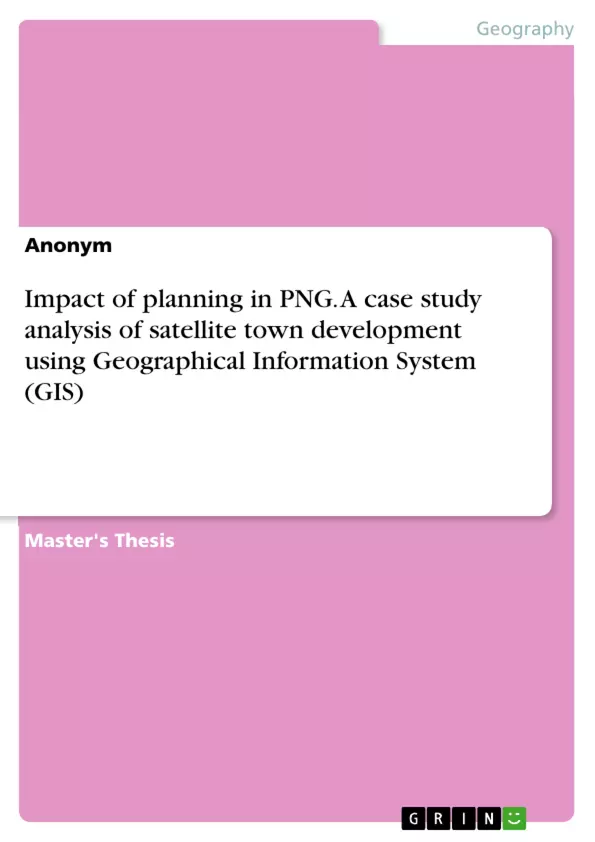This research dissertation examines the statutory planning system in Papua New Guinea (PNG) with particular focus on satellite town development and use of Geographical Information System (GIS). Satellite town developments on state and customary land are controlled by the Physical Planning Act 1989 and Physical Planning Regulation 2007, and administered by the Office of the Chief Physical Planner (OCPP), a division within the Department of Lands Physical Planning (DLPP). The implementation of the satellite town developments is facilitated by the various statutory processes in the department; beginning with planning, surveying, valuation, land administration and ends with issuing of titles.
Inhaltsverzeichnis (Table of Contents)
- CHAPTER 1: INTRODUCTION
- 1.1 INTRODUCTION
- 1.2 FOCUS OF THIS RESEARCH
- 1.3 BRIEF OVERVIEW OF PAPUA NEW GUINEA
- 1.4 CONTEXT OF THE RESEARCH
- 1.5 DEVELOPMENT PLANNING IN PNG
- 1.6 RESEARCH AIM AND OBJECTIVES
- 1.7 STRUCTURE OF THIS DISSERATION
- CHAPTER 2: LITERATURE REVIEW
- 2.1 INTRODUCTION
- 2.2 A GLOBAL PERSPECTIVE OF SATELLITE TOWN DEVELOPMENT
- 2.2.1 DEFINING SATELLITE TOWNS
Zielsetzung und Themenschwerpunkte (Objectives and Key Themes)
This research dissertation examines the impact of satellite town development in Papua New Guinea (PNG), focusing on how the lack of adherence to the Physical Planning Act 1989 and Regulation 2007 has influenced development outcomes. The study aims to analyze the effectiveness of planning processes, using a case study approach.- The impact of legislation on satellite town development in PNG.
- The role of Geographical Information System (GIS) in facilitating satellite town development.
- Case studies of successful and unsuccessful satellite town development in PNG.
- Recommendations for improving planning processes and incorporating GIS into future planning initiatives.
- The potential for modernizing planning processes through e-planning systems and computer-aided planning tools.
Zusammenfassung der Kapitel (Chapter Summaries)
- Chapter 1: Introduction provides an overview of the research, focusing on the importance of development planning in PNG and outlining the research aim and objectives.
- Chapter 2: Literature Review explores the global perspective of satellite town development, providing definitions and highlighting the importance of effective planning processes.
Schlüsselwörter (Keywords)
The core focus of this research is the impact of planning on satellite town development in Papua New Guinea. It analyzes the role of legislation, specifically the Physical Planning Act 1989 and Regulation 2007, in shaping development outcomes. The study also highlights the importance of Geographic Information System (GIS) as a tool for facilitating satellite town development and explores case studies that demonstrate both successful and unsuccessful planning processes. Keywords include: satellite town development, Papua New Guinea, Physical Planning Act, Regulation 2007, GIS, planning processes, case studies, sustainability, e-planning systems.- Arbeit zitieren
- Anonym (Autor:in), 2018, Impact of planning in PNG. A case study analysis of satellite town development using Geographical Information System (GIS), München, GRIN Verlag, https://www.grin.com/document/429714



